Go multi-chain at Warp speed
Introducing Warp, a blazing-fast intent routing and execution engine with built-in account abstraction. Build multi-chain apps with seamless UX at warp speed.
Introducing Warp, a blazing-fast intent routing and execution engine with built-in account abstraction. Build multi-chain apps with seamless UX at warp speed.
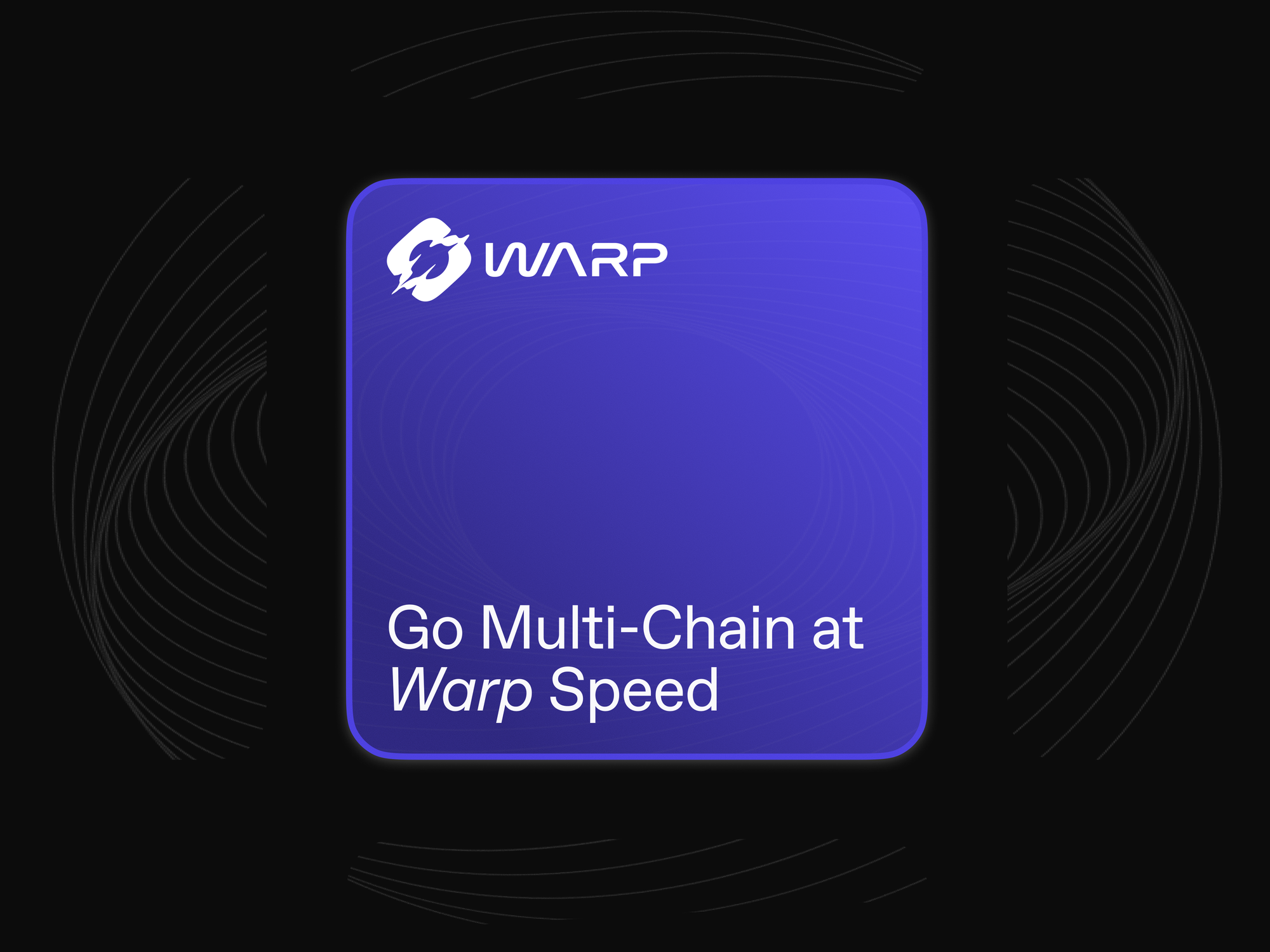
Users don’t want to sign over random hashes, deal with gas tokens, chains, or manually route through bridges, DeFi protocols, and DEXs. Users want to click buttons. They want fast, cheap, and secure onchain interactions that are so seamless they don’t even know they are dealing with blockchains.
Developers don’t want to manage wallets or integrate every blockchain, bridge, and DEX. Developers want to delight users. They want to build a truly differentiated product with a simple UX, seamless interoperability, and effortless access to new blockchain primitives.
Warp is a blazing-fast intent routing and execution engine. It utilizes resource locks (via The Compact), account abstraction, and a set of onchain and offchain systems to aggregate crosschain settlement layers and orchestrate multi-chain intents through a unified solver market (the “Relayer Market”).
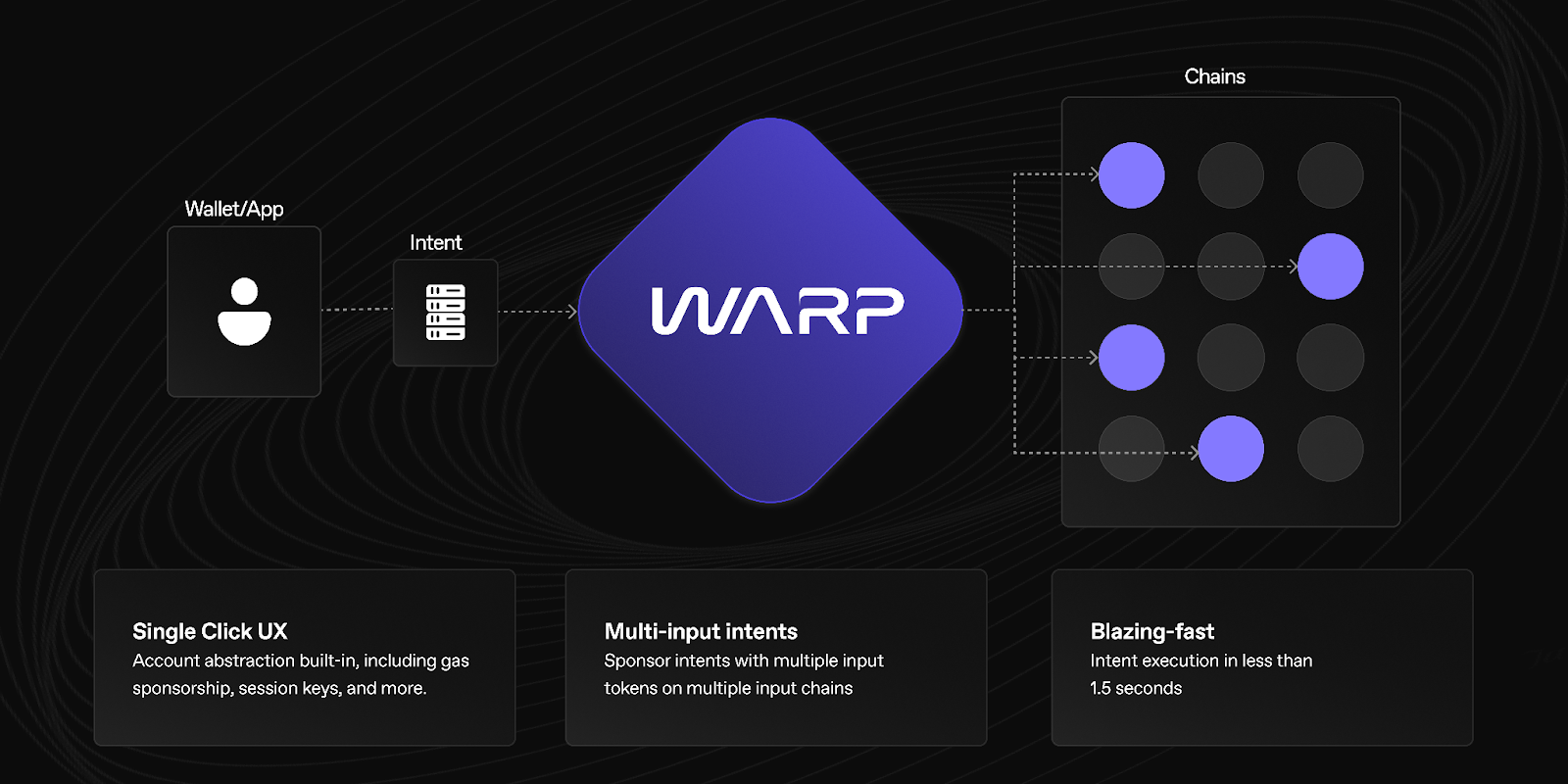
Warp makes chain and account complexities completely invisible to the end user and developer. With one unified SDK and API, developers can unify user assets across chains, relay single-chain transactions with gas sponsorship, enable seamless crosschain swaps, and execute any transaction on any chain with a single signature.
At the core of Warp is a powerful offchain Orchestrator and onchain Routing Engine. These systems are built to be modular, allowing a high degree of composability across blockchains, settlement layers, and account types.
The Orchestrator is a crosschain solver. It indexes user balances, receives intents, finds the optimal crosschain path, builds the transaction data that corresponds to the user intent, and coordinates with the relayer market for execution. When an intent involves locked funds on The Compact, the Orchestrator also plays a crucial role in ensuring users cannot double-spend the solver market (referred to as an “Allocator” on The Compact).
Warp aggregates settlement layers (or intent bridges) through a unified Relayer Market. This enables extreme flexibility when it comes to solving user intents. Importantly, Warp does not aggregate intent-bridge APIs. Instead, it has a custom onchain integration with each settlement layer. Intents are propagated to the Relayer Market, and solvers interact directly with an underlying settlement layer via Warp’s routing contracts.
Warp intents are broken down into chain-token elements with origin and destination chain transactions. Each chain-token element can be assigned to an independent settlement layer, thus allowing for Warp intents to consist of multiple input tokens, input chains, and settlement layers. This aggregation enables broad chain and token coverage at the best price by ensuring each chain-token element is executed via the cheapest settlement layer.
Take, for example, the following intent. Alice wants to deposit 100 USDC into Morpho on Arbitrum. She has 20 USDC on Sonic and 0.5 ETH on Soneium. Relay enables the cheapest fees between Soneium and Arbitrum, while Eco provides the cheapest USDC route from Sonic to Arbitrum. The Orchestrator finds this path, builds the relevant transactions, and coordinates the execution of the intent with the Relayer Market.
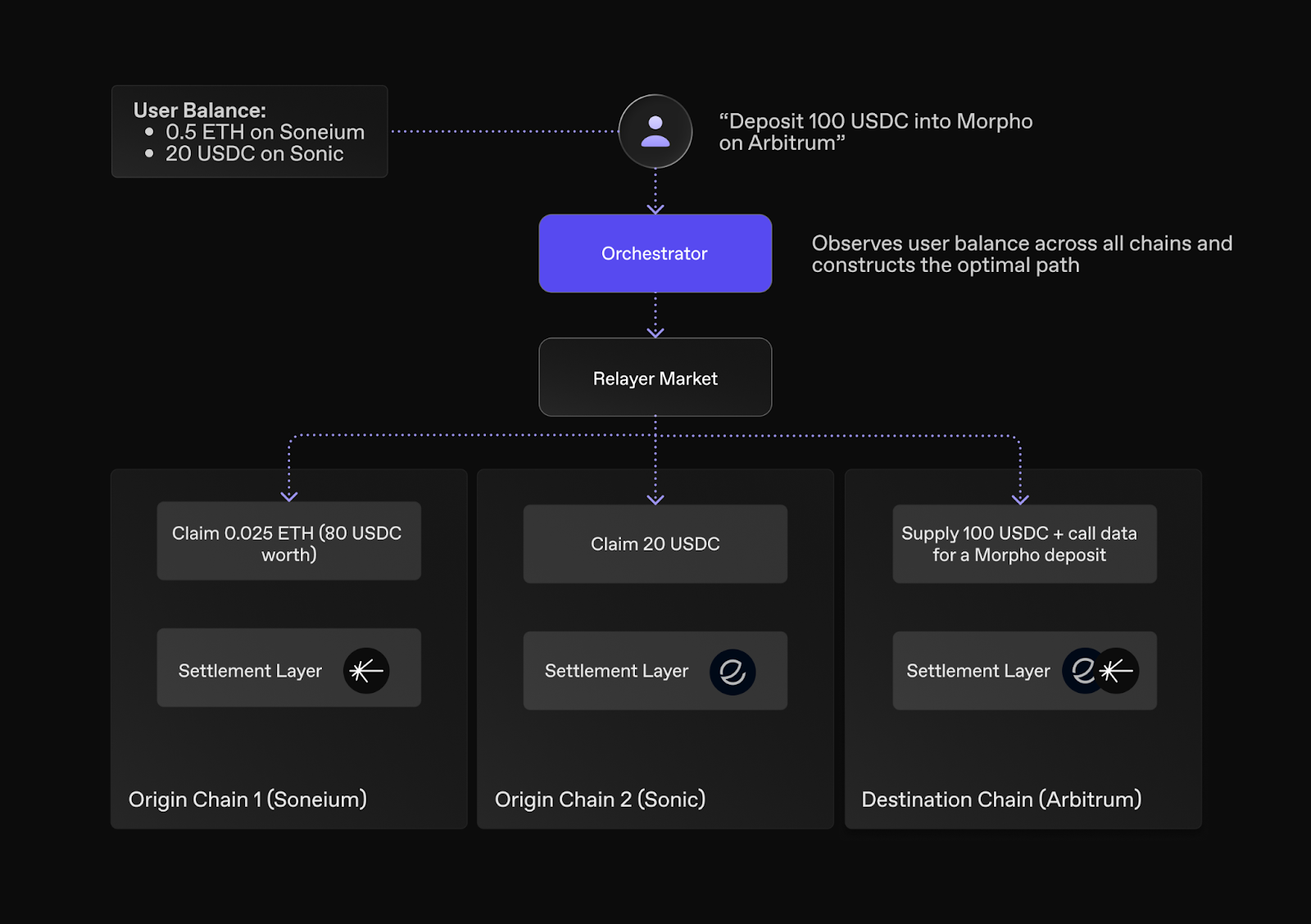
No matter the complexity of the underlying route, Warp intents are atomic, deterministic, and near-instant. To achieve this, we employ The Compact, a Resource Locking method built in collaboration with Uniswap Labs and LI.FI. The Compact enables Relayers to instantly fill on the destination chain without waiting for claims to be processed and finality to be reached on the origin chains.
Warp is fast. Very fast. Pre-confirmations from Relayers confirm when an intent has been put onchain. These confirmation times move at web2 speed, averaging 500ms from the moment of intent creation (signature). This ensures that Warp does not hinder product teams from building snappy UIs that users love. Inclusion on the destination blockchain from intent creation averages <1.5 seconds on Ethereum L2s, even when Ethereum L1 is used as an origin chain.
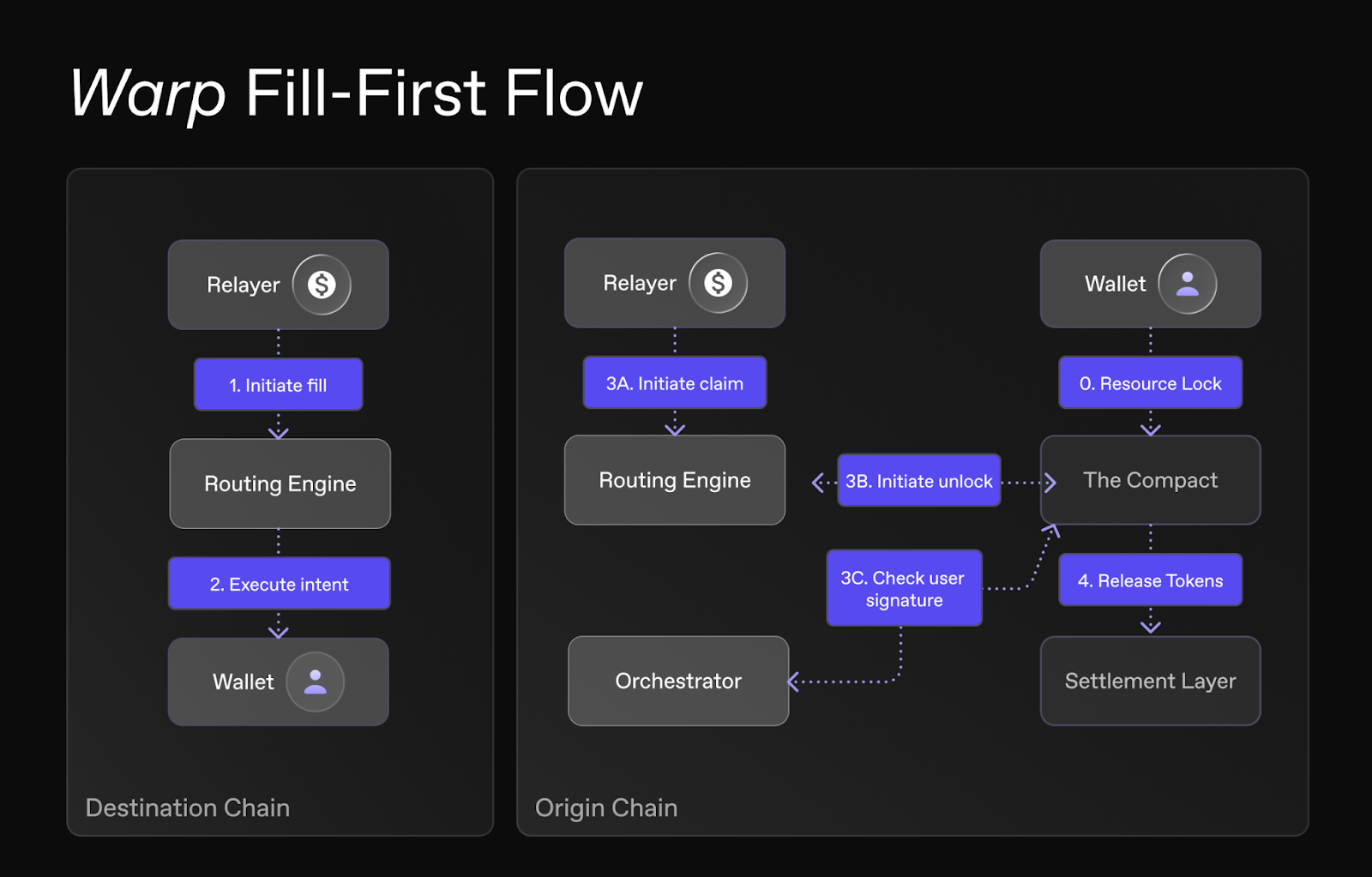
Intents via Warp start with the Relayer supplying the required tokens, plus gas, and any calldata (an onchain instruction set) for actions on the destination chain. This is what guarantees speed. The output token is known and guaranteed by the Relayer, and therefore, deterministic, MEV-protected, and without slippage. Simultaneously, the Relayer initiates a claim on the relevant origin chain(s) where the user has tokens. Repayment to the relayer is managed by the underlying settlement layer.
For more on the inner workings of The Compact, read our prior blog post.
Intents start and end with a wallet. Smart wallets are the future of Ethereum, and Warp takes full advantage of this. It combines smart accounts and intents for an unparalleled set of features:
Warp is a drop-in replacement for ERC-4337. Through one unified SDK and API, developers can get access to Warp intents, plus a bundle-paymaster-like service for single-chain relaying. Like ERC-4337, Relayers act as a bundler-paymaster, they put the transaction onchain for the user and fund the gas. Warp therefore enables fee abstraction with the ability to pay gas and bridge fees in any ERC-20 or subsidizing gas and bridge fees for your users.
Warp supports arbitrary origin-chain and destination-chain operations as part of a single intent without compromising crosschain atomicity and deterministic outcomes. Origin executions are user-authorized operations that run before funds are deposited into the settlement layer. For example, enabling Alice to fund a crosschain intent on Sonic with Pepe from Arbitrum by swapping Pepe into USDC as part of the relayer repayment transaction to the settlement layer.
Destination-chain executions take place after the fill transaction and are guaranteed, given there is no crosschain slippage with Warp. These destination-chain operations are user actions with the user’s account as the msg.sender, a huge quality of life improvement for teams that are stringing together crosschain operations against DeFi protocols that rely on msg.sender for core features.
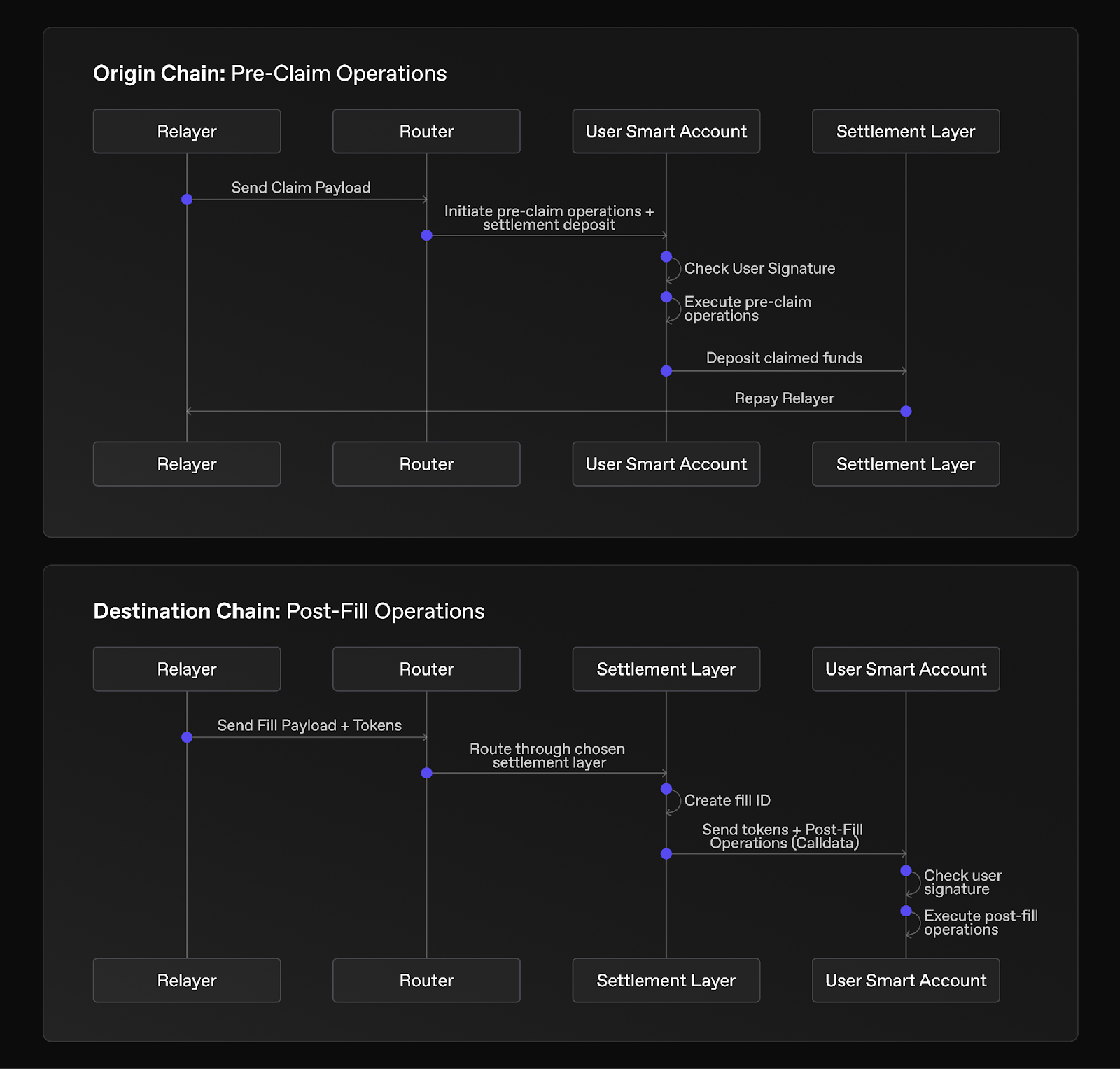
With Warp we introduce a purpose-built legible EIP-712 signature structure that enables the multi-input intents with origin and destination chain operations through a single signature. Importantly, this single signature flow has guaranteed legibility with a structured representation of every execution. No blob encoding or opaque calldata. This is a significant improvement on the majority of ERC-4337 bundle-paymaster systems that require the user to sign a raw cryptographic hash, which no user or UI can easily decode.
A custom session key implementation has been developed for compatibility with intent-based transactions and The Compact, enabling multi-chain automations without compromising self-custody. This makes Warp the perfect tool for developers looking to build at the intersection of onchain automation and intents.
Warp is integrated with Across, Relay, and Eco as the primary settlement layers, with more coming as needed. It works with all smart account implementations, including ERC-7579 for first-class features, EIP-7702 for EOA upgrades, and vanilla EOAs for the “connect-approve-warp” flow.
Get started with the quickstart guide today. Testnets require no API key. For production access and submitting intents on mainnets, visit the Rhinestone developer dashboard and fill out the form for an API key.